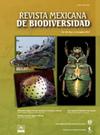Reproductive effort in two viviparous species of blue-tailed skinks (Squamata: Scincidae: Plestiodon) from Mexico
IF 0.8
4区 环境科学与生态学
Q4 BIODIVERSITY CONSERVATION
引用次数: 0
Abstract
The relative allocation of energy organisms devote to reproductive processes (aka reproductive effort) constitutes a central topic in life history theory. We document some aspects of the reproductive ecology and investment of 2 viviparous skinks of the genus Plestiodon from Mexico: an undescribed species previously assigned to P. brevirostris(Plestiodon sp., La Malinche, Tlaxcala, 2,700-3,000 m) and P. dugesii (2 populations, Mazamitla and Tapalpa, Jalisco; 2,400-2,500 m). We used relative litter mass (RLM) as a measure of reproductive effort and calculated a body condition index (BCI) as a proxy of the energy status of non-pregnant females, post-parturient females, and neonates. There were no differences in any of the reproductive characteristics between the 2 populations of P. dugesii. Both species lacked sexual size dimorphism, and female body size did not influence RLM, litter size nor litter mass. However, female BCI influenced RLM and, in P. dugesii, a larger litter size correlated with a lower BCI of neonates. Despite their overall similarities in reproductive investment, there seem to be differential selective pressures shaping offspring characteristics of these 2 lizard species.墨西哥两种蓝尾石龙子胎生物种的繁殖努力
生物体用于繁殖过程的能量的相对分配(也称为繁殖努力)构成了生命史理论的一个中心话题。我们记录了来自墨西哥的Plestiodon属的2个胎生石龙子的生殖生态和投资的一些方面:一个未描述的物种,以前被分配给P.brevicostris(Plestiodons sp.,La Malinche,Tlaxcala,2700-3000米)和P.dugesii(2个种群,Mazamitla和Tapalpa,哈利斯科;2400-2500米)。我们使用相对产仔数(RLM)作为生育努力的衡量标准,并计算了身体状况指数(BCI)作为未怀孕女性、产后女性和新生儿能量状态的指标。两个种群间的繁殖特性没有任何差异。这两个物种都缺乏性别大小的二型性,雌性体型不影响RLM、产仔数和产仔量。然而,雌性脑机接口影响RLM,在杜格西P.dugesii中,产仔数越大,新生儿脑机接口越低。尽管它们在生殖投资方面总体相似,但似乎存在不同的选择压力,形成了这两种蜥蜴的后代特征。
本文章由计算机程序翻译,如有差异,请以英文原文为准。
求助全文
约1分钟内获得全文
求助全文
来源期刊

Revista Mexicana de Biodiversidad
环境科学-生物多样性保护
CiteScore
1.50
自引率
11.10%
发文量
69
审稿时长
12-24 weeks
期刊介绍:
Revista Mexicana de Biodiversidad appears in 4 issues per year and publishes the products of original scientific research regarding biodiversity of the Americas (systematics, biogeography, ecology and evolution), as well as its conservation and management.
The journal ensures high standards with a system of external peer review, and is included in the list of excellence of journals of the National Council of Science and Technology (CONACyT, Mexico). It is currently included in ASFA, Biological Abstracts, Biological Sciences, Latindex Periódica, RedALyC, Web of Science (Thomson Reuters), SciELO, SCOPUS, and Zoological Records.
 求助内容:
求助内容: 应助结果提醒方式:
应助结果提醒方式:


